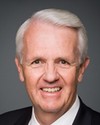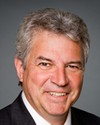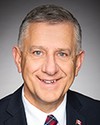I would like to thank the committee chair and the rest of the committee members for the invitation to appear here today.
I, and other officials at Health Canada, have reviewed the Auditor General's 2015 Report, and we have paid a great deal of attention to his recommendations. We take the findings seriously and are addressing each of them through an action plan. This plan will continue to be refined and defined in collaboration with first nations. Indeed, as you know, we work in cooperation with first nations. This plan can therefore only be completed with an additional commitment by our first nations partners.
The health care system serving first nations is highly complex. Provincial health systems do not directly extend to first nations reserves. To support first nations, Health Canada provides the delivery of a range of effective, sustainable and culturally appropriate programs and services. We work with first nations to increase their control of health services and collaborate with provinces to increase access and promote system integration.
We also support programs that address first nations health priorities in the areas of mental health, chronic disease, maternal and child health, and health benefits providing coverage for prescription drugs, dental care, vision care, mental crisis intervention, and medical supplies and equipment.
Most of the community-based programs have been transferred in varying degrees to over 400 first nation communities. This number does not include British Columbia, where in 2013 Health Canada transferred its role in the design, management, and delivery of first nations health programming in British Columbia to the new First Nations Health Authority.
Health Canada provides funding to first nations to deliver clinical care in 27 remote and isolated communities, again, outside British Columbia. In an additional 53 remote and isolated first nation communities, Health Canada continues to deliver clinical care. The delivery model varies based on the specifics of each province and geographic conditions. The clinical care teams are located in nursing stations, along with community health workers delivering other programs.
Because of the importance of these services, it is imperative that Health Canada ensure that remote communities have access to clinical and client care, that nursing stations are staffed with registered nurses, and that nurses work in a safe environment, have access to physicians to support them, and have access to tools.
Registered nurses and nurse practitioners are predominantly the first point of contact in isolated communities and are highly educated and qualified individuals. To ensure that our nurses are prepared for the unique demands of working in remote stations, a mandatory training requirement has been defined and is now part of the national education policy.
I can report that we currently have an 88% compliance rate on Health Canada's nursing education model for controlled substances in first nations health facilities, while advanced cardiac life support is at 63%, trauma support is at 59%, pediatric advanced life support is at 64%, and immunization is at 61%. The overall compliance rate is at 46% as of the end of April 2015. We still have work to do, and we are doing it while ensuring that we have resources in place to backfill these important positions while incumbents are in training.
Health Canada is committed to ensuring that nurses working in remote first nations communities meet established public service requirements on top of these workers' already robust credentials.
Remote and isolated practice environments sometimes require nurses to respond immediately to life-threatening or emergency situations. Nurses therefore need appropriate mechanisms to perform these important duties.
Clinical practice guidelines assist nurses to address clinical care situations and provide instruction on whether and when consultation with a physician or a nurse practitioner is required. There are arrangements in place for all nursing stations to access physicians when physicians are not located in the community. We also continue to collaborate on region-specific solutions with provinces to advance access to health services and with regulatory bodies to support nurses practising within their scope of practice.
A key challenge is the need for more nurses. Health Canada has implemented a nurse recruitment and retention strategy, which involves a number of initiatives: a nursing recruitment marketing plan, a nursing development program, a student outreach program, and an onboarding program.
Since its February launch, we have received over 500 nursing applications, with 200 of these moving to the next level of screening. As well, the strategy aims to increase the number of nurse practitioners, which will provide greater stability in the clinical teams, assist in meeting training objectives, and enhance the level of services available at the community level.
Nurses and other community health professionals require facilities to conduct their work. Currently, we invest approximately $30 million annually for repairs, renovation, and construction of health facilities, plus an additional $44 million for maintenance and operations. The nursing stations are owned by first nations communities, and we collaborate with them to support their operation.
We work with first nations communities to ensure buildings are inspected and deficiencies are addressed. In response to the audit, we are implementing a more robust tracking system to capture this work. We will also enhance our process in order to use facility condition reports as a tool to better plan maintenance and renovation work with the owners.
In addition, to ensure new nursing stations are built to code, we have updated our requirements for attestations and have communicated the change to facility management staff. The audit rightly noted that the requirements, such as the station as defined currently, did not provide the necessary level of assurance.
Another area reported on was the management of medical transportation; medical transportation that provides coverage to support access to insured health services. Health Canada spends over $300 million on medical transportation per year, and approximately 60% of that is in remote and isolated communities. The main reasons for transportation are emergencies, at 24%, hospital services, at 10%, appointments with general practitioners, at 7%, and dental services, at 5%.
The program provides coverage for transportation to the nearest appropriate professional or facility that takes place when the needed service is not locally available. Our goal is to provide timely coverage for medical transportation to avoid an undue burden for clients and health care professionals. Decisions are based on a national program framework and are made with a solid understanding of the health services available and the transportation options at the regional level.
In response to the audit observations, the program has already modified and disseminated guidelines to resolve discrepancies observed between our practices and the medical transportation framework in terms of the level of documentation required.
Regarding the transportation of children who are not registered, Health Canada has a long practice of allowing coverage for a child up to one year of age to be covered for medical transportation under the registration number of their parents. Health Canada will continue its efforts with partners to inform parents and make available registration material in nursing stations and health centres.
Health Canada and the Assembly of First Nations are undertaking a joint review of the non-insured health benefits program, of which medical transportation is a component, and I am pleased to report that the work is well under way. It will identify strengths, weaknesses, including inefficiencies in administration, and recommendations for action.
Given that the geographic location, the size of the community, and the need to ensure cultural safety influence the range of programs and services funded or provided by Health Canada, comparing one community to the other is not always possible or the best approach. Community health planning, investing in the integration of services with provincial systems, and the development of community programs and capacity have proven to be more effective and more responsive to community needs over time.
As indicated earlier, Health Canada funds a number of community programs aimed at addressing specific needs and working as a complement to the clinical and client care program. These programs are funded to support community health needs and mostly managed by the communities themselves. In response to the audit, we will improve our support to community health planning to enhance integration of the community-based programs and clinical services where these services are delivered by Health Canada. We will also engage with the communities to review the current service delivery model and clinical care resource allocations.
The last area I would like to discuss is coordination among health system jurisdictions.
We work closely with partners to build health service delivery models that take into account community needs.
We have made significant progress with health service integration over the last 10 years. We see examples in various regions where there are more physicians' visits, provincial services are being extended on reserve, and there are more collaborative arrangements between community health services and regional health authorities. Co-management and trilateral tables exist in most regions to formally engage with provincial and first nations partners to advance common practices and resolve systemic issues. We will formally engage these tables in order to make progress on the important issues raised in the report.
Health Canada will continue to collaborate with our partners to develop and implement other models of first nations-led health systems across the country, as we have celebrated in B.C. We have presented an overview of our action plan, which requires further engagement and collaboration with first nation partners. We believe the next update will be more comprehensive as it will benefit from our partners' input.
In closing, we are working on a number of actions in response to the audit, and we will continue to do so.
I would note that I am accompanied today by three senior officials from Health Canada's first nations and Inuit health branch: Valerie Gideon, assistant deputy minister, regional operations; Robin Buckland, executive director, office of primary health care; and Scott Doidge, acting director general, non-insured health benefits.
We would be pleased to answer your questions. Thank you.










